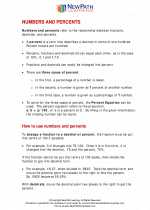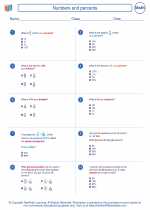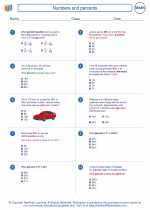Numbers and Percents
Understanding Percents
Percents are a way of expressing a number as a fraction of 100. The word "percent" means "per hundred", so when you see a percent sign (%) it represents a number out of 100. For example, 50% is equivalent to the fraction 50/100, which simplifies to 1/2.
Converting Between Percents, Decimals, and Fractions
To convert a percent to a decimal, you divide by 100. For example, 25% is equal to 0.25 as a decimal.
To convert a fraction to a percent, you can divide the numerator by the denominator and then multiply by 100. For example, to convert 1/4 to a percent, you would divide 1 by 4 to get 0.25, and then multiply by 100 to get 25%.
Calculating Percentages
To calculate a percentage of a number, you can use the formula:
Percentage = (Part/Whole) x 100
For example, if you want to find 20% of 150, you would use the formula:
(20/100) x 150 = 0.20 x 150 = 30
So, 20% of 150 is 30.
Percent Increase and Decrease
To calculate a percent increase or decrease, you can use the formula:
Percent Change = ((New Value - Original Value) / Original Value) x 100
If the result is positive, it's a percent increase. If it's negative, it's a percent decrease.
Study Guide
1. Understand the concept of percents as a way of expressing a number out of 100.
2. Practice converting between percents, decimals, and fractions.
3. Learn how to calculate percentages using the formula (Part/Whole) x 100.
4. Practice calculating percent increase and decrease using the formula ((New Value - Original Value) / Original Value) x 100.
It's important to practice various types of problems related to percents and to understand how they are used in real-life situations such as discounts, taxes, and interest rates.
.◂Math Worksheets and Study Guides Eighth Grade. Numbers and percents

 Worksheet/Answer key
Worksheet/Answer key
 Worksheet/Answer key
Worksheet/Answer key
 Worksheet/Answer key
Worksheet/Answer key
